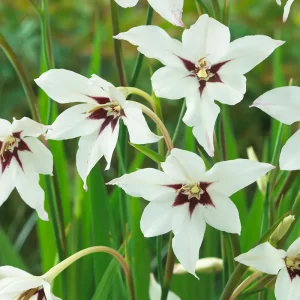 When fall truly descends on the garden, with autumn leaves making piles in the corners and the last of the flowers breathing their final gasps, I miss the color and the life that marks spring and summer. I especially miss fragrance. While all the seasonal change is going on, I rush out to cut the few remaining sprays of the anonymous, small-flowered rose that grows by my front steps. Its blooms are the last to appear in spring, but are also the last to depart in fall. They exude fragrance as a parting gift.
When fall truly descends on the garden, with autumn leaves making piles in the corners and the last of the flowers breathing their final gasps, I miss the color and the life that marks spring and summer. I especially miss fragrance. While all the seasonal change is going on, I rush out to cut the few remaining sprays of the anonymous, small-flowered rose that grows by my front steps. Its blooms are the last to appear in spring, but are also the last to depart in fall. They exude fragrance as a parting gift.
If I had the room I would also grow a katsura—Cercidiphyllum japonicum—a deciduous tree that colors up in the fall, with leaves that emit a fragrance reminiscent of caramel.
There is another plant that will also exude fragrance generously in autumn—if you remember to plant the corms in spring. Commonly known as “Abyssinian gladiolus,” peacock orchid, or “sword lily,” and formerly called Acidanthera, it now goes by the handle, Gladiolus murielae.
If the word “gladiolus” is an immediate turn-off, as it is for some people, take heart.
With the exception of its upright, sword-like leaves, ‘Murielae’ does not look like a conventional gladiolus. Three foot stalks bear fragrant, white, flowers with six pointed petals apiece and dark maroon throats. The flower stems arch gracefully, and some people have likened the blooms’ appearance to orchids.
Lately the high tide of garden fashion has not floated Abyssinian glads to the forefront of advertising and editorial copy. That is sure to change eventually, as it has from time to time since the plants were introduced in 1896. Gardeners who covet heirlooms have always kept them in mind.
In addition to being a boon for fall fragrance lovers, these orchid look-alikes are great for gardeners who grow their plants in containers. The corms, planted in spring, flourish in containers positioned in sunny locations. Since they are late to sprout growth, you can plant them in nursery pots and drop them into larger, more decorative containers as summer-blooming, containerized annuals give up the ghost. Succession planting, whether in-ground or in several nursery pots also ensures the longest possible continuity of bloom.
Earlier generations of plant taxonomists often hurled around Latinized place names like “orientalis”—Asian–or “persicum”—from Persia–and bestowed them on plants that were not necessarily native to those regions. That is not true of Abyssinian gladiolus, which actually does hail from Abyssinia, now known as Ethiopia.
For people living in cold winter climates, the plant’s origins also give a clue to its hardiness. Gladiolus murielae will not survive in frozen ground. Potted specimens can be stored intact in a cool place. Alternately, the corms can be lifted, settled on absorbent paper for a few days to dry out, and then stored in a cool, dry place until early spring. You can start the corms indoors in pots or wait until all danger of frost has passed and start them outdoors.
Usually the combination of beauty and fragrance invites the attention of hybridizers. In the case of Abyssinian glads, hybridizing efforts have been made, and some “sword lilies” introduced to the market, but fragrance has been lacking. The exception to this is ‘Lucky Star’, introduced in 1966. Hybridized by a New Zealand grower named Joan Wright, it was the result of crosses between standard glads with Abyssinian glads. ‘Lucky Star” is the result of those efforts, but its appearance is that of an Abyssinian, rather than a conventional gladiolus. Its white petals and flower configuration are similar to species Abyssinians, but the “star” in each flower’s throat is a golden ring bounding the central maroon blotch.
Having been on the market now for over fifty years, ‘Lucky Star’ is an heirloom in its own right.
Sometime between Thanksgiving and New Year’s, the spring bulb and plant catalogs will begin appearing on websites and drifting into mailboxes. Make a note to order some Abyssinian glads for spring planting. Next fall you will reap the fragrant rewards.
Find ‘Lucky Star’ at Old House Gardens, 4175 Whitmore Lake Road, Ann Arbor, MI 48105; (734) 995-1486; www.oldhousegardens.com. Print catalog available. For species Abyssinians, in addition to some of the attractive, but non-fragrant “sword lilies”, go to Brent and Becky’s Bulbs, 7900 Daffodil Lane, Gloucester, VA 23061; (877) 661-2852; www.brentandbeckysbulbs.com. Print catalog available.
